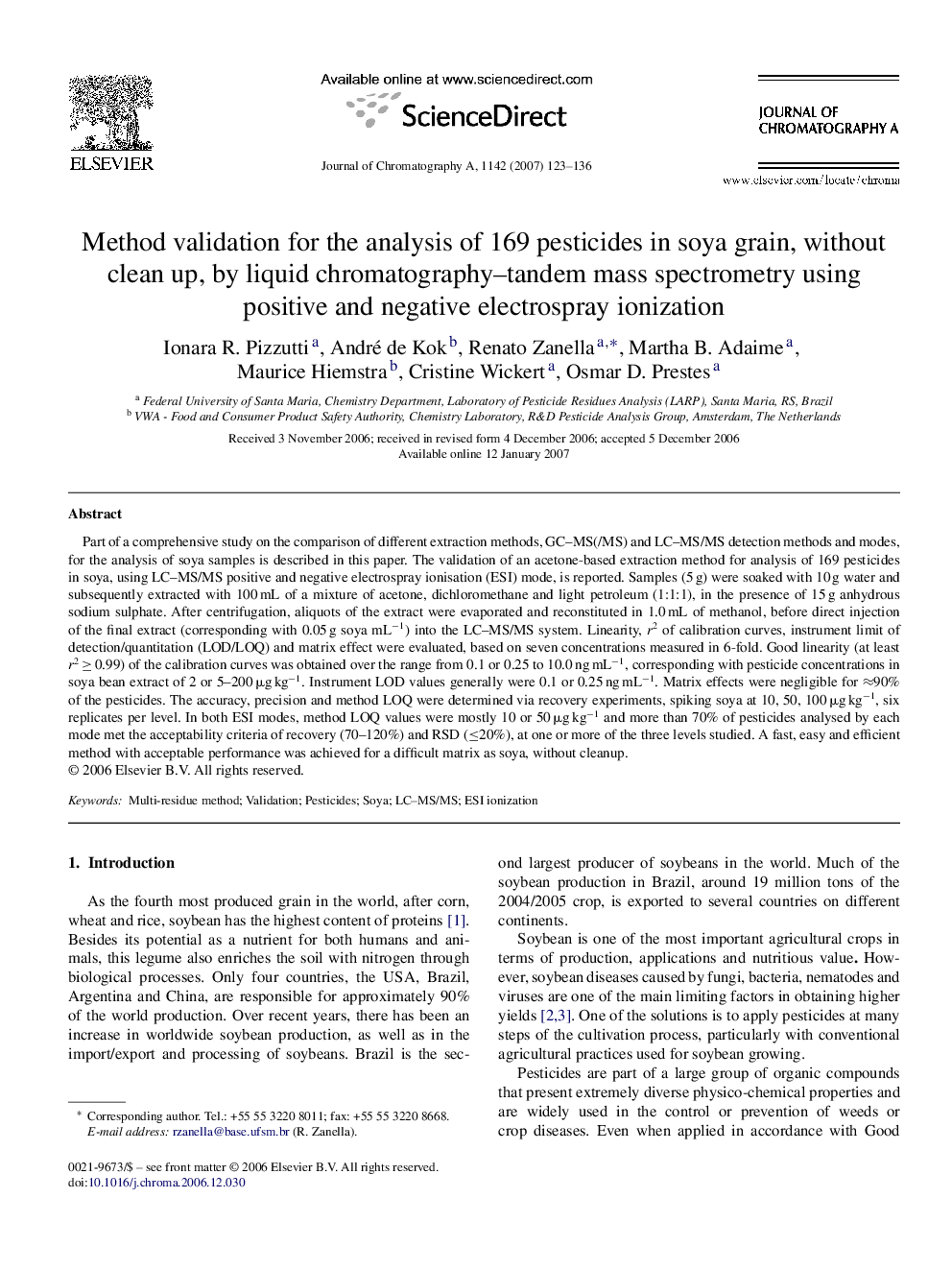| Article ID | Journal | Published Year | Pages | File Type |
|---|---|---|---|---|
| 1208118 | Journal of Chromatography A | 2007 | 14 Pages |
Part of a comprehensive study on the comparison of different extraction methods, GC–MS(/MS) and LC–MS/MS detection methods and modes, for the analysis of soya samples is described in this paper. The validation of an acetone-based extraction method for analysis of 169 pesticides in soya, using LC–MS/MS positive and negative electrospray ionisation (ESI) mode, is reported. Samples (5 g) were soaked with 10 g water and subsequently extracted with 100 mL of a mixture of acetone, dichloromethane and light petroleum (1:1:1), in the presence of 15 g anhydrous sodium sulphate. After centrifugation, aliquots of the extract were evaporated and reconstituted in 1.0 mL of methanol, before direct injection of the final extract (corresponding with 0.05 g soya mL−1) into the LC–MS/MS system. Linearity, r2 of calibration curves, instrument limit of detection/quantitation (LOD/LOQ) and matrix effect were evaluated, based on seven concentrations measured in 6-fold. Good linearity (at least r2 ≥ 0.99) of the calibration curves was obtained over the range from 0.1 or 0.25 to 10.0 ng mL−1, corresponding with pesticide concentrations in soya bean extract of 2 or 5–200 μg kg−1. Instrument LOD values generally were 0.1 or 0.25 ng mL−1. Matrix effects were negligible for ≈90% of the pesticides. The accuracy, precision and method LOQ were determined via recovery experiments, spiking soya at 10, 50, 100 μg kg−1, six replicates per level. In both ESI modes, method LOQ values were mostly 10 or 50 μg kg−1 and more than 70% of pesticides analysed by each mode met the acceptability criteria of recovery (70–120%) and RSD (≤20%), at one or more of the three levels studied. A fast, easy and efficient method with acceptable performance was achieved for a difficult matrix as soya, without cleanup.
